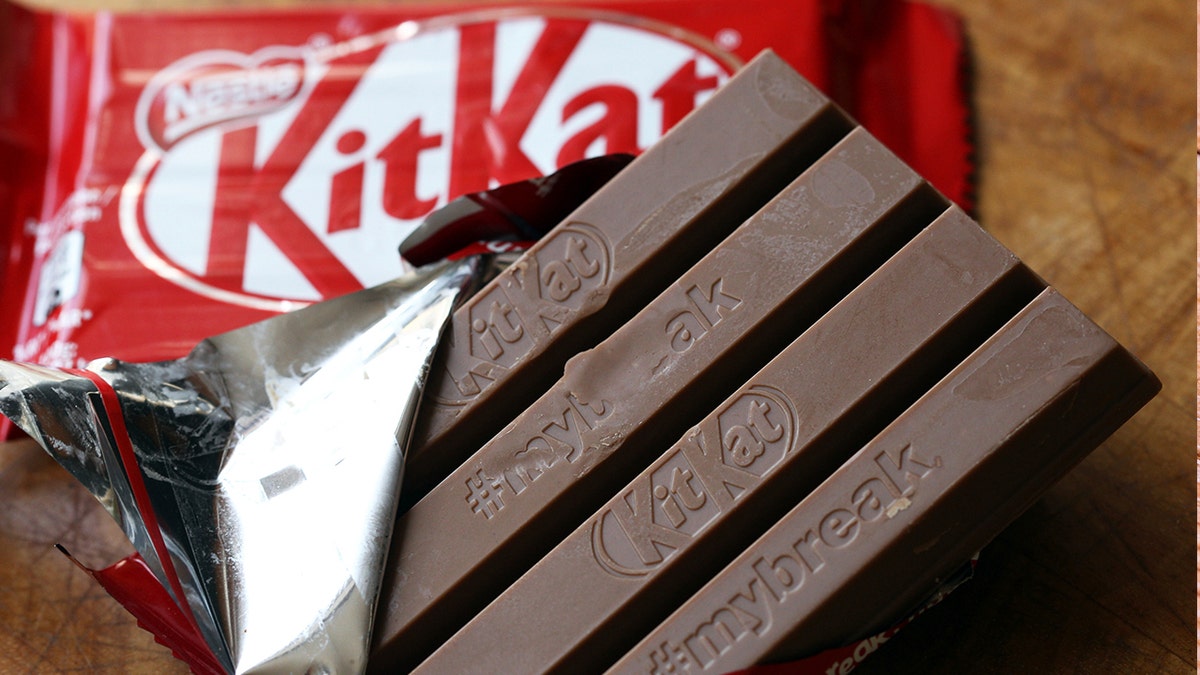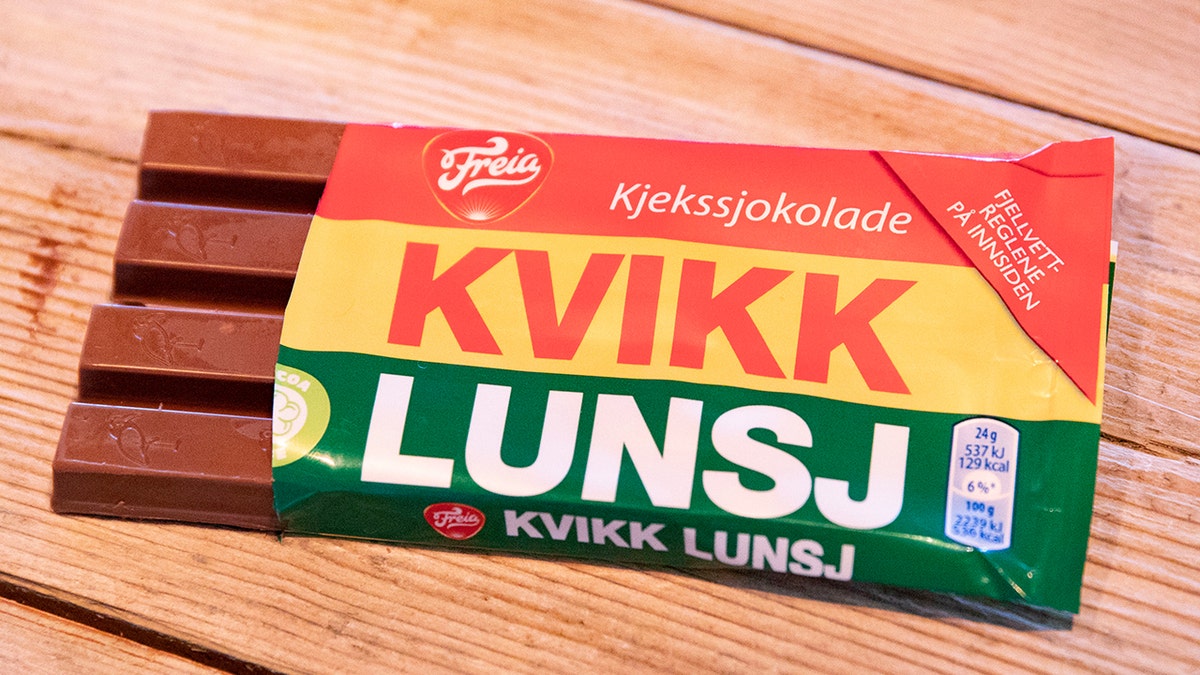
Nestle, the maker of Kit Kats, has been trying since 2002 to establish a European trademark for the snack. (AP)
Kit Kat can’t catch a break.
On July 25, Europe's highest court ruled that the four-fingered shape of the wafer-filled chocolate bar did not merit protected status in the European Union (EU), The Guardian reports.
The heated drama actually began in 1937, when the Cadbury-owned Mondelēz company rolled out the Kvikk Lunsj chocolate bar, which is nearly identical in design, shape and size to the Kit Kat, which Nestlé debuted two years prior. For clarity, Nestlé is the parent company of Kit Kat worldwide, while Hershey is the parent company of Kit Kat in the U.S.

Food multinational Nestle has been trying since 2002 to establish a European trademark for their KitKat chocolate snack, but European Union judges ruled on Wednesday that their four-fingered shape is not distinctive enough to be trademarked. (AP)
According to the outlet, their competitive coexistence was peaceful until 2002, when Kit Kat filed for protection of design with the EU’s intellectual property office. The status was granted, but challenged by Cadbury in 2007, setting off an 11-year legal war.
PEPPERIDGE FARM RECALLS GOLDFISH CRACKER VARIETIES DUE TO POSSIBLE SALMONELLA CONTAMINATION
As noted by Food & Wine, the most recent decision was made as Nestle failed to prove that the Kit Kat had "become iconic" in "a significant part" of the 28 nations of the EU. As Cadbury celebrates their victory for Kvikk Lunsj, Nestlé reps say the battle isn’t over yet.
“We believe that the distinctive shape of our four-finger KitKat deserves protection and, following today’s findings, the case will now be sent back to the EUIPO board of appeal to examine the evidence that Nestlé has filed,” the company told The Guardian. “We think the evidence proves that the familiar shape of our iconic four-finger KitKat is distinctive enough to be registered as an EU trademark.”
“We are pleased that the decision of the European court of justice supports our position,” reps for Mondelēz offered in reply.
Meanwhile, Josh Gerben, a trademark attorney in Washington D.C., told the Associated Press that companies need to show that a shape is distinctive enough to get a trademark approval, and that the shape is not merely functional.
FOLLOW US ON FACEBOOK FOR MORE FOX LIFESTYLE NEWS
"They want to make sure they're not giving a monopoly to a company for a shape that is needed to make a product," Gerben says. "For example, a circle for a cracker couldn't be trademarked."
This is not the first time the two candy giants have duked it out in court –Nestlé once successfully blocked Cadbury’s effort at trademarking the purple color used for its signature chocolate wrappers, according to The Guardian.
The Associated Press contributed to this report.
